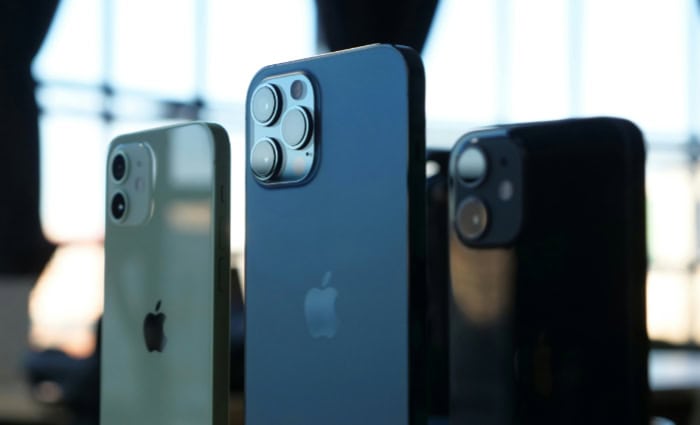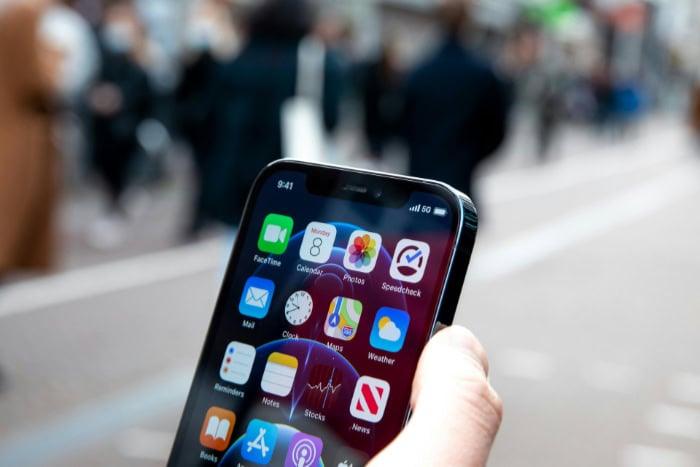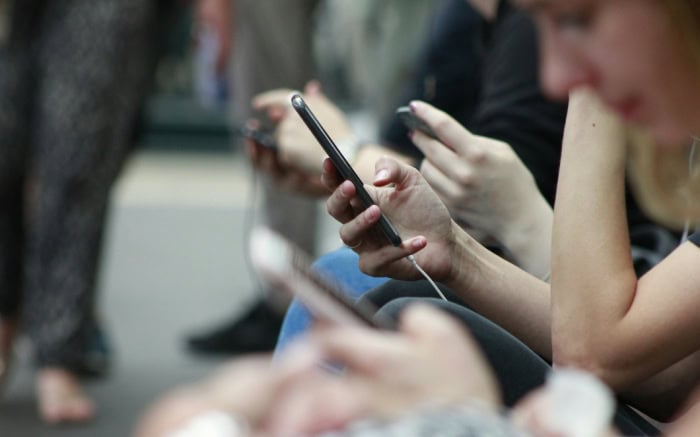Pros and Cons of iPhone: The Truth About Apple's Flagship

Choosing a smartphone is no small task, especially when the iPhone is one of the most talked-about options on the market. Praised for its premium design, cutting-edge technology, and ability to work seamlessly with other Apple products, the iPhone has earned its place as a top contender.
Yet, like any device, it isn’t without its challenges, such as its high price tag and limited customization.
Advantages of Owning an iPhone
Apple’s iPhone remains one of the most iconic smartphones in the world, highly regarded for its combination of sleek design, intuitive use, and groundbreaking technology. While the competition in the smartphone market is fierce, the iPhone offers distinct benefits that continue to attract users from diverse backgrounds.
Seamless Integration With Apple Ecosystem
One of the standout benefits of the iPhone is its ability to work harmoniously with other Apple devices. Whether you own a MacBook, iPad, AirPods, or Apple Watch, the iPhone ensures smooth synchronization across all platforms.
AirDrop enables instant file sharing between devices without requiring external apps or setup, creating a faster and more efficient workflow. Features like Handoff allow users to start tasks on one device and continue them on another effortlessly, providing unmatched convenience.
Additionally, the ecosystem benefits extend to everyday experiences. For instance, receiving calls or texts on a MacBook while working, unlocking an Apple Watch through proximity to your iPhone, or connecting AirPods instantly make every aspect of use feel refined.
For anyone already invested in Apple’s products, owning an iPhone amplifies the value of the ecosystem.
Strong Security Features
Apple consistently places a strong emphasis on user privacy and security, and the iPhone showcases this commitment through its many protective features. Face ID utilizes advanced facial recognition technology, offering a secure yet fast way to unlock the phone and authorize payments.
Biometric authentication adds another layer of protection that feels intuitive, prioritizing ease of use while safeguarding personal information.
Regular iOS updates ensure security vulnerabilities are addressed quickly, keeping users safe from emerging digital threats. Features like app permission controls and encrypted messaging through iMessage add further layers of privacy.
Beyond its built-in measures, Apple's transparency with security policies inspires confidence in its ability to protect user data, a factor that resonates strongly in the modern age.
Premium Design and Build Quality
When it comes to aesthetics and durability, the iPhone consistently sets the standard for premium smartphones. Its elegant design combines simplicity with sophistication, making it instantly recognizable and visually appealing.
High-quality materials such as aluminum and the ceramic shield used in recent models ensure the device feels sturdy without sacrificing style.
Apple’s focus on usability shines through in its interface, which minimizes unnecessary complexity and presents an experience that is accessible to users of all skill levels. Thoughtful attention to detail, like tactile buttons, vibrant displays, and carefully tuned color finishes, adds to its sense of refinement.
This combination of form and function creates a satisfying ownership experience that few competitors can match.
Superior Camera Performance
Photography enthusiasts and casual users alike often praise the iPhone for its exceptional camera capabilities. The hardware and software behind the camera work together seamlessly to deliver stunning results, no matter the scenario.
Features like Night Mode enhance images taken in low-light environments, capturing intricate details that other devices might miss. Portrait Mode enables users to produce professional-quality photos with blurred backgrounds, making everyday shots look polished and intentional.
Videographers benefit from high-quality video recording options, including support for 4K resolution and cinematic mode. These features not only elevate video clarity but also introduce creative tools, allowing users to experiment with focus transitions or depth effects.
For those who enjoy capturing moments and sharing them across social media platforms, the iPhone’s camera serves as a reliable tool that exceeds expectations.
Apple's advancements in computational photography further refine images, ensuring vibrant colors, balanced exposure, and sharp details with minimal effort on the user’s part.
Disadvantages of Using an iPhone

While the iPhone offers a premium experience and cutting-edge features, it is not without flaws. Some of the design, pricing, and ecosystem decisions Apple has made might not appeal to all users, especially those with specific needs or preferences.
High Price Point
The iPhone has always been viewed as a premium product, which is reflected in its cost. Even the base models come with a higher price tag than many competitors, making it less affordable for budget-conscious buyers.
Many Android smartphones in the same range offer comparable or even better hardware specifications, such as higher resolution displays, larger batteries, or faster charging.
For those unwilling to invest in the latest model, Apple’s older versions can sometimes feel outdated due to software advancements that favor newer hardware. As a result, users looking for value in terms of longevity may find Android alternatives more appealing, as they often provide similar performance levels at a lower cost.
The financial commitment required to join the iPhone ecosystem is undoubtedly a deterrent for many potential buyers.
Restricted Customization Options
iOS is known for its simplicity and streamlined interface, but this comes at the expense of customization. Compared to Android, the iPhone offers limited flexibility in how users can personalize their devices.
For example, while Apple has recently introduced home screen widgets, they are still more restrictive in design and functionality than those available on Android. The inability to set default apps for core functions like internet browsing, email, or navigation can also frustrate users.
For people who enjoy tailoring their smartphones to suit their aesthetic or functional preferences, the iPhone might feel too rigid. The lack of deeper customization options, such as advanced theming or the ability to install apps from third-party sources, further highlights its restrictive nature.
While this approach keeps the experience cohesive, it may not satisfy users seeking greater control over their devices.
Proprietary Ecosystem Limitations
The seamless integration of Apple’s ecosystem is one of its major strengths, but it has a downside. Older iPhone models, prior to the iPhone 15 lineup, relied heavily on Apple’s proprietary Lightning cable.
This created challenges for users who had embraced industry-standard USB-C for other devices. Not only did Lightning cables limit interoperability with non-Apple hardware, but they also came with higher costs for certified replacements or accessories.
While Apple has transitioned to USB-C with the iPhone 15 and later models, allowing greater compatibility and convenience, the change has come as a late correction. Owners of older iPhones still face the inconvenience of managing Lightning accessories alongside USB-C devices.
This ongoing reliance on proprietary connections for previous models underlines the broader limitations of Apple’s ecosystem, which can feel restrictive when compared to the openness offered by competing platforms.
In addition to hardware, software compatibility issues remain. Transferring files between iPhones and non-Apple devices like Windows PCs or Android smartphones can feel slow and cumbersome.
Apple’s closed ecosystem prioritizes seamless interaction between its own products but limits integration with third-party devices, a frustration for those who use a mix of brands.
Hardware Constraints
Some hardware decisions made by Apple have sparked frustration among users over the years. The iPhone does not offer expandable storage, forcing buyers to choose higher storage options upfront when purchasing, which significantly increases the price.
For users who take a lot of photos or videos, managing storage space can become a constant concern. Cloud-based solutions, such as iCloud, are available but require additional subscriptions, which can add ongoing costs.
The removal of the headphone jack in recent iPhone models has also been a source of disappointment. While Apple promotes wireless alternatives like AirPods, this shift has been inconvenient for users who prefer wired headphones or depend on devices with 3.5mm audio connections.
Dongles are available, but they add extra steps to what was once a simple experience, and keeping track of these small accessories can be frustrating.
Combined, these hardware constraints force users to adapt to Apple’s design choices, and while some embrace the changes, others find them limiting or unnecessary. Buyers who value functionality and flexibility may feel restricted as a result.
While many of Apple’s decisions are aimed at enhancing simplicity and consistency, they can backfire for users who prioritize affordability, adaptability, or compatibility. The iPhone’s limitations in price, customization, proprietary reliance, and hardware design reflect trade-offs that may not align with everyone’s preferences or lifestyle.
For those who value freedom of choice or require more budget-friendly options, these shortcomings could outweigh the benefits.
Comparison: iPhone vs. Android Smartphones

The debate between iPhone and Android smartphones has been ongoing for years, fueled by differences in design, functionality, and user experience. Both platforms have their strengths and weaknesses, which cater to distinct preferences and priorities.
A closer look at performance, software updates, app ecosystems, and usability highlights what sets these two options apart and helps paint a clearer picture of their unique offerings.
Performance And Software Updates
When it comes to performance, the iPhone consistently delivers a smooth and fast user experience, thanks to Apple’s control over both hardware and software. The integration of iOS with Apple’s custom-designed processors ensures optimal performance, even on older devices.
Apps load quickly, multitasking feels seamless, and system-wide responsiveness remains steady over time. In comparison, Android smartphones vary in performance due to the diverse range of manufacturers and hardware components, which can result in inconsistencies depending on the device.
Software updates provide another point of differentiation. Apple’s centralized approach to iOS updates ensures that all compatible devices receive the latest improvements simultaneously, enhancing security and introducing new features consistently for all users.
Android, on the other hand, suffers from fragmentation. Updates are rolled out by individual manufacturers, often delayed or limited to flagship devices, leaving budget models behind. For users who value a reliable and uniform update process, iOS has a clear advantage.
App Ecosystem
The app ecosystem is a critical factor in evaluating smartphones, as it affects the quality and variety of applications available. The iPhone benefits from Apple’s stringent app review process, which ensures robust security and performance standards for all applications on the App Store.
Users encounter fewer issues with malware or poorly optimized apps, creating a safer and more consistent experience.
Android’s Google Play Store offers a wider variety of apps, including those tailored for niche markets and experimental features. However, its more lenient policies allow for a greater risk of encountering low-quality or malicious applications.
While choice and individuality are strengths of Android’s ecosystem, the tighter control of Apple’s App Store appeals to users looking for trusted and polished software.
Exclusive apps also contribute to the differences between the two platforms. Certain apps or features, such as professional video editing tools and games, are often optimized for iOS or released exclusively on the App Store.
Users seeking access to these high-quality or exclusive apps may find the iPhone a better fit, while Android users benefit from the diverse selection and freedom to install apps from alternative sources.
Design And Usability
The philosophies behind iPhone and Android design are markedly different, shaping how users interact with each platform. Apple prioritizes minimalism and simplicity, offering a clean interface that eliminates unnecessary clutter.
Icons, menus, and settings are designed to be intuitive and accessible, making the iPhone an excellent choice for first-time smartphone users or those who prefer straightforward navigation.
Android, in contrast, emphasizes customization and flexibility. Users can modify the home screen, install third-party launchers, personalize widgets, and configure settings to suit their specific needs.
For experienced users or those who enjoy tailoring their device, Android provides unmatched versatility. However, the complexity of customization can feel overwhelming for newcomers or those who prefer a more structured system.
In terms of physical design, the iPhone’s premium construction and consistent aesthetics make it stand out. Apple’s focus on high-quality materials and sleek designs has become synonymous with its brand.
Android smartphones vary widely in design depending on the manufacturer, which can range from sophisticated flagship devices to more functional budget models. This range allows Android to cater to a broader audience in terms of design preferences and price points.
Suitability for Different User Needs

The versatility of the iPhone has made it a popular choice for a wide range of users, from professionals to content creators. Its combination of robust hardware, intuitive software, and specialized features ensures it meets diverse requirements.
Whether the focus is on productivity, security, or creative expression, the iPhone has tools and capabilities designed to make tasks easier and more enjoyable.
Business And Productivity Use
For professionals, the iPhone offers a reliable platform for managing work-related tasks. Features like Apple’s native Notes and Calendar apps are seamlessly integrated, making it easy to organize schedules, track projects, and set reminders.
The iPhone also syncs effortlessly with cloud services such as iCloud, Google Workspace, and Microsoft Office, ensuring access to vital documents, emails, and files across devices. Third-party apps like Slack, Trello, and Zoom further enhance productivity, providing streamlined communication and task management.
Security is another significant benefit for business users. Apple’s encryption technology ensures that sensitive data, such as emails, company files, and messaging, remains protected.
Features like Face ID and biometric authentication provide secure yet convenient access to the device. For professionals who deal with confidential information, the iPhone’s reputation for strong privacy safeguards is reassuring.
Additionally, the iPhone’s compatibility with Apple Watch enhances productivity through features like quick notifications, health monitoring during long workdays, and easy access to calls and messages without picking up the phone. The combination of practical features and robust security makes the iPhone an excellent tool for professionals looking to optimize their work processes.
Content Creation And Social Media
The iPhone’s appeal extends far beyond productivity, making it a popular choice among content creators and social media enthusiasts. Its advanced camera system is tailored for capturing high-quality photos and videos.
Features like Night Mode, Portrait Mode, and cinematic video recording provide creators with creative control and stunning results, even in challenging lighting conditions. The integration of computational photography ensures vibrant colors, sharp details, and balanced exposure without requiring professional equipment.
For video creators, the iPhone supports 4K video recording and advanced editing tools within the Photos app and third-party apps like iMovie and LumaFusion. Whether shooting short clips for TikTok or editing long-form content for YouTube, the device offers the tools needed to produce professional-looking results directly from the phone.
Apps like Instagram, TikTok, and Snapchat are optimized for iOS, ensuring smooth performance and access to the latest features. Creators often find content uploaded from an iPhone appears sharper and more visually appealing on these platforms due to better compatibility between iOS and app developers.
Influencers, vloggers, and casual users alike benefit from this advantage when engaging with their audience.
Sharing content is also made simple with AirDrop, which allows instant file transfers between Apple devices. This feature is particularly useful for creators who work with a team or use other Apple products like MacBooks or iPads to edit and finalize their projects.
The iPhone combines professional-grade hardware with user-friendly software, empowering creators to bring their ideas to life. Whether capturing everyday moments for social media or producing polished content for a professional audience, the iPhone’s tools and optimized features provide endless opportunities for creativity.
Conclusion
The iPhone has built its reputation on a foundation of exceptional design, powerful performance, and seamless integration within Apple’s ecosystem. Its advantages, such as strong security features, superior camera capabilities, and the convenience of syncing with other Apple devices, make it an attractive choice for those seeking a reliable, user-friendly smartphone.
The iPhone’s focus on premium materials and intuitive software ensures a consistently polished experience, whether for productivity or entertainment.
However, it is not without its drawbacks. The iPhone’s high price point, limited customization options, and proprietary limitations, especially for older models, might deter some users.
Additionally, decisions like the removal of the headphone jack or the lack of expandable storage might feel restrictive for those who value flexibility. Comparing it to Android, which offers greater customization and varied price points, highlights the trade-offs between the two platforms.
Ultimately, choosing an iPhone comes down to your personal priorities, lifestyle, and budget. If you value a seamless user experience, robust security, and access to exclusive features, the iPhone is a strong contender.
For those who prioritize affordability, customization, or a more open ecosystem, alternatives may be a better fit. Carefully weighing the iPhone’s advantages and limitations will help determine if it aligns with your unique needs and expectations.


